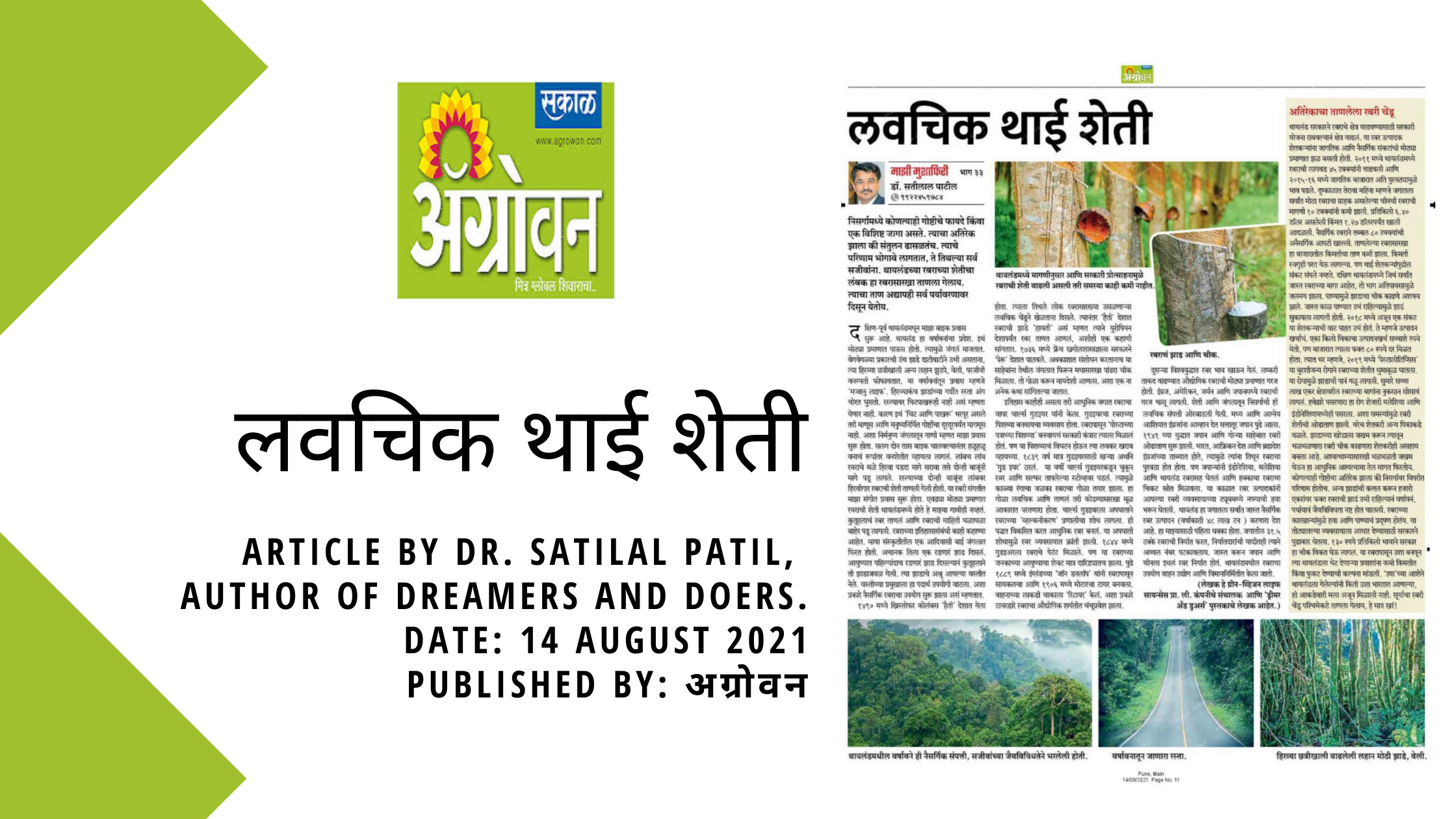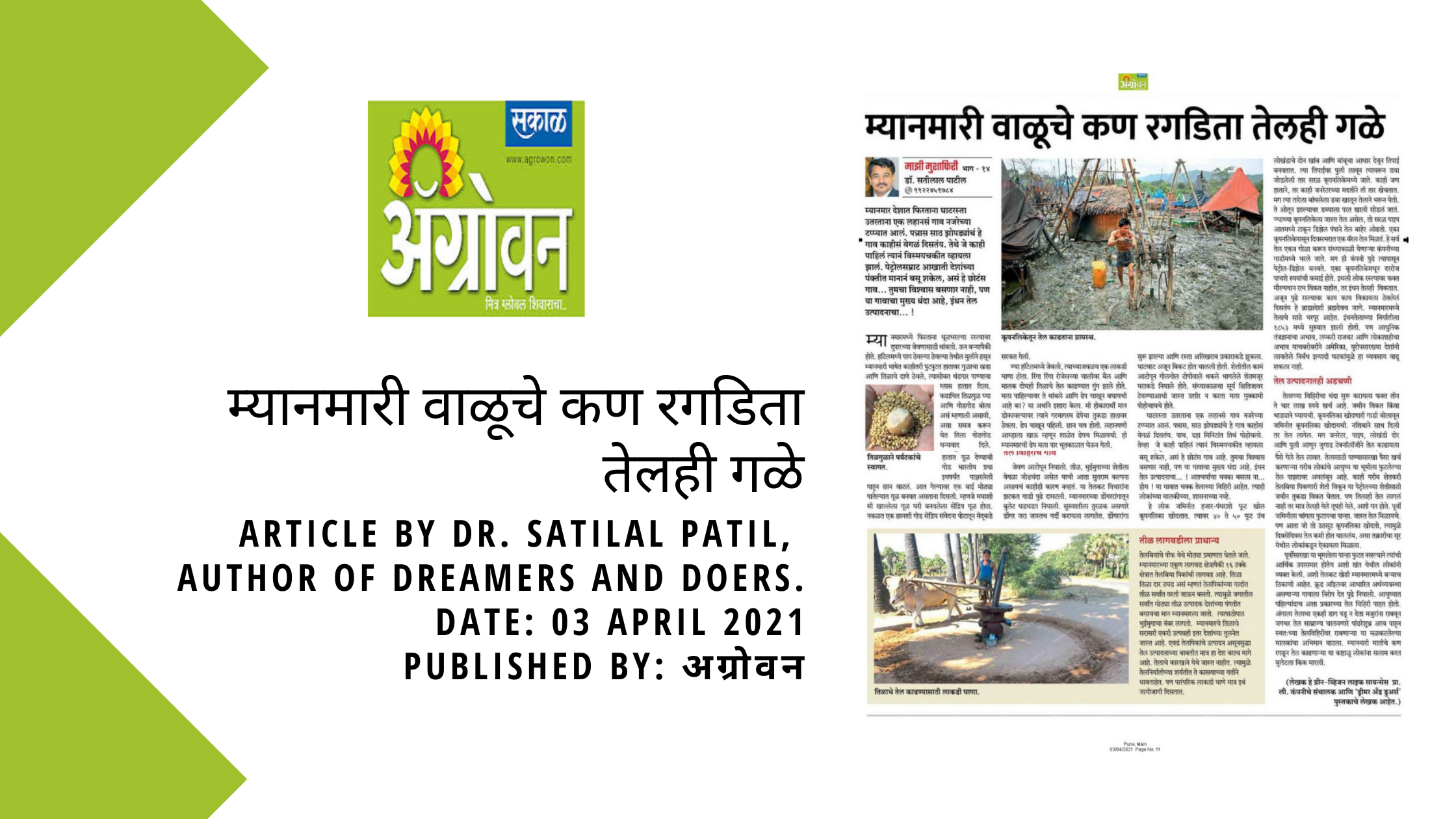…………. Dr. Satilal Patil
My experience of smart farms in South Korea:
The process of digitization of economy has sped up with full throttle during COVID pandemic. It has helped us in working from home, attending schools, entertaining and getting in touch with friends and family. While whole society was riding on digital wave one sector was struggling to catch up onto this stream of development. These were the farmers. They were unable to sell their produce; no storage and preservation facilities were available and means of logistics were seized. Since their produce was a living thing (crops), they couldn’t stop or hold production process. Though vegetable and fruit growers were little lucky since they managed to sell their produce to local vendor and consumer. But floriculture industry has doomed. Since people were busy in improving their immunity, flowers became a lesser priority item for them. Countries sealed their air travel and flights were grounded. It destroyed farmers’ hope of going for export market too. Would the farmers be saved from this disaster if digital agriculture was used? This question stuck in my head. Then I remembered my experience with the South Korean smart farms.
Five years back I was on my routine business trip to South Korea. We were visiting agrochemical dealers, farmers, agriculture universities and research centers, discussing performance of our products like M-Impact®, Horti-Impact® and NanoWet®. I was staying in Gwangju, the beautiful town surrounded with lush green mountains. I was waiting in hotel lobby for my friend and associate Mr. Shim. He came with his trademark smiling face walking towards me with full of energy. Mr. shim is 65 years young and has evergreen personality. He spent his entire life in agriculture. “Come on Doctor, today we are going to visit Smart Farms”, he said.
To that I exclaimed, “Smart farms? What are those?”
“Smart farms are digitally managed farms, where all aspects of the agriculture are controlled digitally. It gives control over agriculture operations.” Mr. Shim throwing his smiley reply at me.
The day was cherry on the top of my tour. We visited several smart farms, interacted with smart farmers, and had delicious traditional lunch with them. In the farms, there were nutrient probs analyzing soil moisture, nutrient level, climate control sensors controlling temperature, light, humidity and carbon dioxide level in air, remote sensing devices analyzing pest, disease, leaf moisture and nutrition, smart fertigation machines preparing doses of exact combination of nutrients needed for plant based on data captured from sensors. These all devices were connected to the server. Farmers were getting all sort of information on their phone and literary can control their greenhouses from home with smartphones.
During winter there was snow outside greenhouse with freezing cold. But climate control system dose wonder and keep warmth inside greenhouse and protects plants. “How much you earn from one acre of smart greenhouse?”, I couldn’t resist my curiosity and asked to a strawberry farmer. “Dr. Patil, we manage to produce strawberry worth 80-90K USD”, he replied. He was earning around 6 million INR from one acre of farm, which was incredible. “Since we control most of factors, we can predict our productivity and market reliability” he added.
This visit intrigued my interest in digital agriculture, and I started studying about it and thought to myself, “Can we have this kind of smart farms in India?”
Why do we need Digital Agriculture?
But why do we need smart greenhouses? The answer would be food security, climate change and relieve distress of farmers.

The hunger:
Today 0.8 billion people are the feeling heat of hunger and another 2 billion will be added in the list by 2050. In modern economy not only humans but also industries consume food. To fulfil living and nonliving mouths(industries), we need to produce more food by consuming less land, water and other natural resources.
Climate change:
During the race of producing more food we need to increase cultivable land. Hence, we have no choice but to steal this cultivable land from forests, which are lungs of mother earth and habitats of vital links of food chain.
Indiscriminate use of pesticides, fertilizers, weedicides, and other agrochemicals contributing to soil, water and air pollution. The runoff of chemical residues has landed on our dining table and entered in our food plate, causing serious illnesses like cancer, Parkinson’s disease, leukemia, ADHD, depression, and asthma. The case of herbicide glyphosate and DDT is well known to us, they are making our springs silent.
Farmers’ distress:
These days the agrarian community is in distress. This distress is due to changing cultivational practices, loss of soil fertility, more dependency on chemicals, irregularity in rainfall, and market volatility. Farmers put their hard earning in soil and hope natural as well as manmade factors will go smoothly during the entire crop cycle. His entire investment is dependent on external factors out of his control.
The revolution from agriculture to agribusiness
Till 19th century agriculture was powered by manpower and animal power. For cultivation, animals like ox, horse, camel, donkey, reindeer and elephants were used. For guarding and surveillance purpose animals like dogs, geese and llamas were used. For seeds and plant nutrition farmer relied on natural resources like own seeds, cow dung, and composts. But things changed in 1960s with wave of Green Revolution emerged. Use of chemical fertilizers, high yielding seed varieties, and mechanization with tractors had filled the skies of agriculture revolution.
In 1980 the journey of modern agriculture brought us to GMO revolution. Genetically modified organisms entered into the gene of agriculture and started improving pest, disease, draught, insect resistance, and poured vitamins and nutrition in human food.
The storm of agriculture development brought mechanization revolution in 2008. Use of smart and efficient machinery boomed. Aerial spraying, automated harvesting machines, heavy duty cultivation equipment, and so many other mechanized tools took charge of agricultural operations.
Now in 2020 we are in the age where we have plethora of information gathered from high speed internet, drones equipped with spectrometric sensors, remote sensing devices, soil probes, and weather stations, government agencies and companies pouring information through SMS and emails. Common farmer is confused. What to do with this bulk of information? How to compile it and convert to one-point advisory? Can we atomize it?

What will digital agriculture enable us to?
Planning:
Digital agriculture enables us to plan the things in advance. Plan things such as, information from weather stations, remote sensing, spectrophotometric sensors, giving the farmer idea about soil type, moisture level, and terrain. This data enables us to plan which crop to sow and which season to target?
Another set of digital agriculture system gives control over crop production, soil health, climate control, and harvesting.
Soil health management:
There are sensor probs installed in soil monitoring nutritional status and moisture content of soil, sending chunk of information to smart fertigation system. Which calculates exact dose of nutrients, pH, and EC of fertilizer solution, and delivers directly to the plant root by drip irrigation system. This avoids overuse of fertilizers and saves money and also reduces environmental pollution.
Plant health management:
The surveillance and scouting devices capture data of pest and disease infection, plant leaf moisture, and nutritional status. This information guides us for preparing spray schedules and avoids unnecessary sprays.


Climate control:
The way we control the climate system feature in our car, we can adjust perfect settings for crop we grow in greenhouse. The temperature, humidity, carbon dioxide and light level are maintained by smart systems.

Harvesting:
The smart harvesters have perfect sense of the harvesting stages by sensing colour, size, brix, and sugar levels of fruit. In crops like strawberries, the fruit picking robots are doing smart job of fruit pickers.

Digital agriculture also helps in storage, preservation, and logistics of farmers produce. The linkages to market information portal and networking with CRM enables the farmers to plan market and fulfil their customer needs in time. The enterprise recourse planning (ERP) system gives control over human resource, finance, sales, operations, and accounts. With smart farms we can predict output and profit of agriculture and act of balancing the balance sheet of agribusiness becomes easier.


What are challenges for Indian farmer for digital agriculture?
Unskilled labors:
In India we have huge population of unskilled labors. In western world, use of mechanization and digitization is aimed to reduce manpower. But here agriculture is leading employment providing sector and backbone of Indian economy. The strategy of replacing manpower will not be useful for India as it might lead to unemployment. We need to train unskilled manpower to skilled workforce and use them as a tool in digital agriculture. Over a billion muscles empowered with skilled brain-power can play key role in Indian economy.
Cost of technology:
Most of the machines, devices, and softwares used in digital agriculture are manufactured in western world and costs in USD, POUND or EURO. Which are not affordable by masses. This hurdle can be sorted out by community sharing of expensive services and devises. Farmers groups or cooperative societies can subscribe services or share these resources and make it available on affordable cost. Government can also provide them on subsidized cost. Government can also play major role in promoting manufacturing of these devices, machines and services by offering perks to industry, organization and innovators.
Unlike western countries, we have tiny farm sizes and different regional languages used among farming community. But these are not big hurdles and can be easily tackled by technological solutions. South Korea has smaller farm sizes like India, but they implemented smart agriculture quite effectively.
In India, agriculture is part of our living system. While converting agriculture into agrobusiness we need to Indianize the technology. We may need to adopt some JUGAD technology for achieving goal of Indian digital agriculture. Instead of western model of digital agriculture it can be SUSTAINABLE DIGITAL AGRICULTURE model. May movement of ORGANIC AGRICULTURE amalgamate with DIGITAL AGRICULTURE and new MIDDLE PATH farming system may emerge… GODSPEED!



